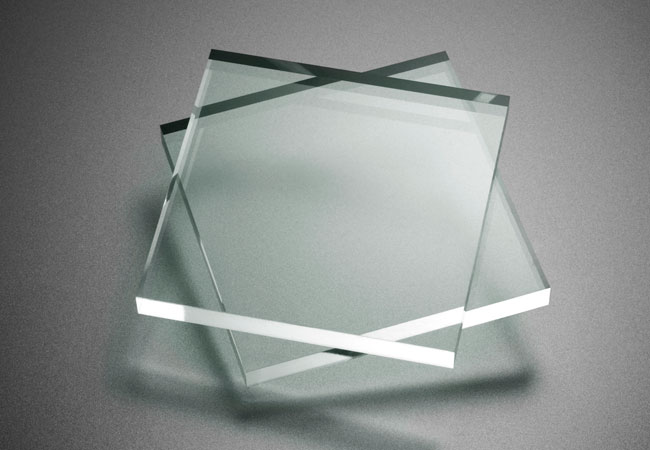

We may earn revenue from the products available on this page and participate in affiliate programs. Learn More ›
There’s little debate over the proper methods to cut wood. However, cutting plastic—particularly acrylic and polycarbonate—is a whole different story.
Plastic is trickier to handle for multiple reasons. For one, some types of plastic melt during the cutting process, unless you take proper precautions. For another, plastic surfaces are prone to scratches, and the edges sometimes need buffing when the project is complete.
Here are three different techniques for cutting plastic, depending on the thickness of the material and the desired style of cut.

Cutting Thin Sheets of Plastic
If you want a straight cut in a thin acrylic or polycarbonate plastic sheet (up to ⅛ inch thick), reach for a simple utility knife, then follow these steps.
- Secure the sheet to a large work surface with a clamp.
- Mark your desired cut line using a straight edge, then score the sheet of plastic with the utility knife, making several passes until you achieve a deep groove. You’ll want the score line to go almost halfway through the plastic.
- Flip over the sheet and repeat the scoring process on the opposite side, along the same cut line.
- Reposition the plastic on your work surface, lining up the scored groove with the edge of your work surface. Secure the plastic in place with a clamp.
- Finally, snap off the portion that is hanging off of the surface.
Cutting Thick Sheets of Plastic
To make straight cuts on thicker sheets of acrylic and polycarbonate plastic (greater than ⅛ inch thick), you’ll need to use a table saw or circular saw. Use blades designed specifically to cut plastic, which are often packaged as “No Melt” blades. Ideally, the teeth of the blade should be evenly spaced, of uniform height and shape, and spaced close together. Teeth spaced wider apart may chip or crack the plastic. Note that if you choose to use a regular blade instead of a “No Melt” blade,” creating too much heat may melt the plastic. As a precaution, pause between cuts to allow the blade to cool.
- Mark the line you are cutting along with a permanent or grease marker.
- Secure the plastic safely to the work surface with a clamp.
- Use the circular saw (or table saw) to cut through the plastic in the same way you’d cut through wood.
Cutting Curves
When you wish to make curved or rounded cuts in plastic, a jigsaw is your best bet, whether you’re working with thin or thick sheets. Ideally, you will use a sharp blade specified for use with plastics. You can also use a blade marked for wood, but it’s possible that friction from the blade will create too much heat, causing the cut plastic to melt. To prevent this from occurring, you may need to experiment with different jigsaw settings and speeds with a scrap piece of plastic. Follow the manufacturer’s instructions for how to use a jigsaw, and you’ll end up with a perfectly cut piece of plastic for your next home repair or DIY project.
A word of advice: Always take the proper precautions when cutting plastic. Secure the sheet of plastic to your workstation with a vice to ensure it won’t shift during cutting, and wear safety glasses to protect your eyes from stray pieces of acrylic or polycarbonate. Call a professional if you don’t feel comfortable taking on the project yourself, or if you don’t have the proper tools for the job.
